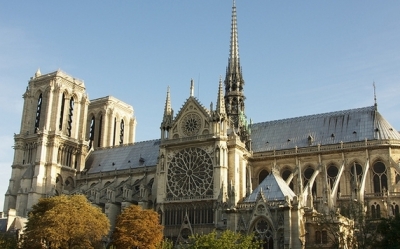
A Gothic cathedral, Notre Dame de Paris is one of the most famous landmarks in France. It was included in the World Heritage list in 1991. The construction of the cathedral goes back to the Middle Ages. In 1160, Maurice de Sully, the Bishop of Paris, came up with the idea of converting the ruins of two basilicas into one large building. In 1163 Pope Alexander III laid the foundation stone. It took almost 200 years to build the entire cathedral.
One of the reasons for the immense popularity of the cathedral was the novel The Hunchback of Notre Dame by Victor Hugo, originally published in 1831. This paved the way for a restoration project between 1844 and 1864 under the supervision of the famous architect Eugene Viollet-le-Duc. The huge church bells and the organ of Notre Dame have since become cultural icons.
The cathedral made news in 2019 when its roof caught fire on April 15 during renovation. The fire raged for 15 hours and caused significant damage. The small wooden spire and the wooden roof above the stone vaulted ceiling were seriously affected.
Picture Credit : Google



